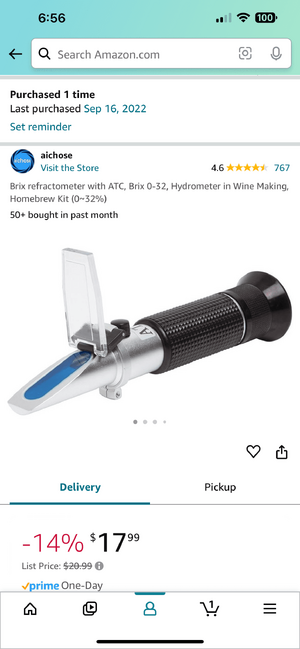Spectrum yes light source no. A photon is a photon does not care what the source is. But light sources have specific spectrums that define how many blue, red, etc photons combine to give you ppfd.
This is a truly complex topic that deserves a proper explanation. Putting a number on your light (the most important part of any grow) is like understanding VPD. Useful if you have a good understanding of what it means, confusing and detrimental if you don’t.
I use apogee personally. But I also use a spectrophotometer. Both are needed to fully understand what you are feeding your plants. You can make a spectrophotometer for about $200 which gives you the curve. Apogee gives you the overall power you are sending to the plant. It’s kinda like amps and volts. You really need both numbers to understand what an electrical appliance is doing, but separately they still have meaning.
This has been my understanding as well. With my old PAR meter I was always comparing what my lights were doing to the Sun.
In some instances, I felt like I was creating better light indoors than what the Sun could do especially since outdoor plants still stretch and still have larf just like an under powered grow light indoors
You can borrow my apogee if you want. My lights are all off for the next month. Give you plenty of time to measure your space and build a profile. Mine has a switch to measure far red too if you are into that. And I have uva and uvb meters you can play with too. I know you are good for it, and I also know where you live if I don’t get them back lol
What UV meter do you like Moe?
Mine are simpletons...one is digital but it's for like sunbathers and knowing the UV index and how long you can be exposed without harm.
The other is just a card for reptiles. It turns blue like a pregnancy test when UV is present

I haven't used my Pulse under UV yet though so not sure if it will work.
Far red is a way to create specific responses but has become a marketing thing. Most lights that say they have it don’t have enough to be effective. But it’s nice to know what you are working with.
Uv is not something I plan to pursue further. I’d rather pump more red photons out during flower than uv from a tuning standpoint. Uv has also become a marketing thing. Although I have seen uvb bring out minor cannabinoids like thcv.
Like a moth to the flame I'm gonna dive into another trial with UV. This time with a LED source and not floro.
I'm the sucker the marketing is targeting. Nothing matter more to me than potency, terps, and cannabinoids. They say increase of resin/oil and I'm like

never used any of the fancy ones but I use the phone app Photone and use the cosine corrector you can get through the app for 25 bucks. I'd like to compare it to a legit light meter to see how accurate it is but so far I haven't had any issues
The grow light meter app to measure PAR / PPFD, DLI, lux / fc, or Kelvin with your iOS or Android phone. Including PPFD meter and DLI conversion for plants.

growlightmeter.com
I might be able to test this for you in a few weeks.
"I know there are phone apps you can get but all the reviews say that they get close but aren't accurate, so I don't see the point. Why get readings if they're inaccurate?"
Why? Because numbers are just numbers-it's all relative. Any meter that gives consistent readings is all you need. Not all PAR is created equal either. I can think of a dozen reasons not to have a PAR meter, and not one good reason to need one. GL though.
I use mine mostly for multi light arrays and seeing how they blend and work together, figuring out spacing and heights.
But if using one light or say two lights that are the same I agree they're not really needed. Manufacturer info and plants will tell you everything
I know Bandit uses the pulse pro. I like the fact that it measures all kinds of things. I have no idea what my co2 levels are.
Well I'm not looking for readings that are simply consistent. I would also like accuracy. If you're consistently wrong, you're wrong every time.
What's it gonna hurt to have an accurate number for the amount of light your plants are getting? Your wallet?
I understand it may not be necessary, but for someone trying to dial in their grow space, I can absolutely see the benefit of having one.
Inkbird make a nice temp/RH/CO2 monitor. CO2 PPM is some nice info to have in the grow.
on sale right now to, i like the wand deal. you're never going to want to just see one spot. you'll want to move it all around and measure a "grid" so to speak..
Exactly. Sweet spots and dead zones are nice to identify before a plant goes in otherwise you don't realize you have a dead zone until a plant is under performing. And say you know you have a sweet spot without a meter, it's a good idea to give your best specimen that spot to get the most out of her.
But yeah with a meter and adjusting lights you can pretty much turn the whole footprint into a sweet spot









